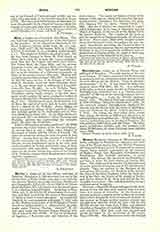

Myrina, a titular see of Asia Minor, suffragan of Ephesus. Herodotus (I, 149) mentions it as one of the eleven cities of. Eolia; Strabo, who says it was built by the Amazon Myrina, also assigned to it an A olian origin (Geographia, XII, iii, 21; viii, 6; XIII, iii, 6); Xenophon (Hellenica, III, i, 6) relates that Artaxerxes gave it to a chieftain named Gorgion. According to Pliny (Hist. nat., V, 30; XXXII, 6) it was famous for its oysters, and must have borne the name of Sebastopolis, of which no trace is found elsewhere. An inscription (Bulletin de correspondance hellenique, V, 283) tells us that Myrina formed part of the Kingdom of Pergamus in the third century s. c. Destroyed by an earth-quake under Tiberius (Tacitus, “Annales”, II, 47) and again under the Emperor Trajan (Orosius, VII, 12), it was each time rebuilt. It was the birth place of Agathias, a Byzantine poet and historian of the sixth century. The names are known of some of the bishops of this diocese, which still existed in the fourteenth century: Dorotheus, 431; Proterius, 451; John, 553; Cosmas, 787 (Le Quien, “Oriens Christ.”, I, 705). The site of Myrina was discovered at a place called Kalabassary in the caza of Menemen and the vilayet of Smyrna, at the mouth of the Hodja-Tchai, the ancient Pythicos. The remains of the harbor and the arsenal have disappeared under the alluvia of the river. Excavations (1880-1882) brought to light about four thousand tombs, dating from the two centuries immediately preceding the Christian Era, in which were found numerous objects representing the divinities of the Greek pantheon; children’s toys, reproductions of famous works, etc.: most of these may be seen today in the Museum of the Louvre.
S. VAILHG

